This post may contain affiliate links. Please read my disclosure and privacy policy.
If you love sushi but don’t look forward to working with raw fish, this vegetarian sushi recipe is for you. It’s easier to make than the traditional version, especially with my shortcut, which lets you skip cooking rice altogether.
This vegetable-packed variation somehow tastes better(!) than the original, so if you’re skeptical, I hope you’ll trust me enough to try it once.
I’m convinced you’ll be as hooked as I am!
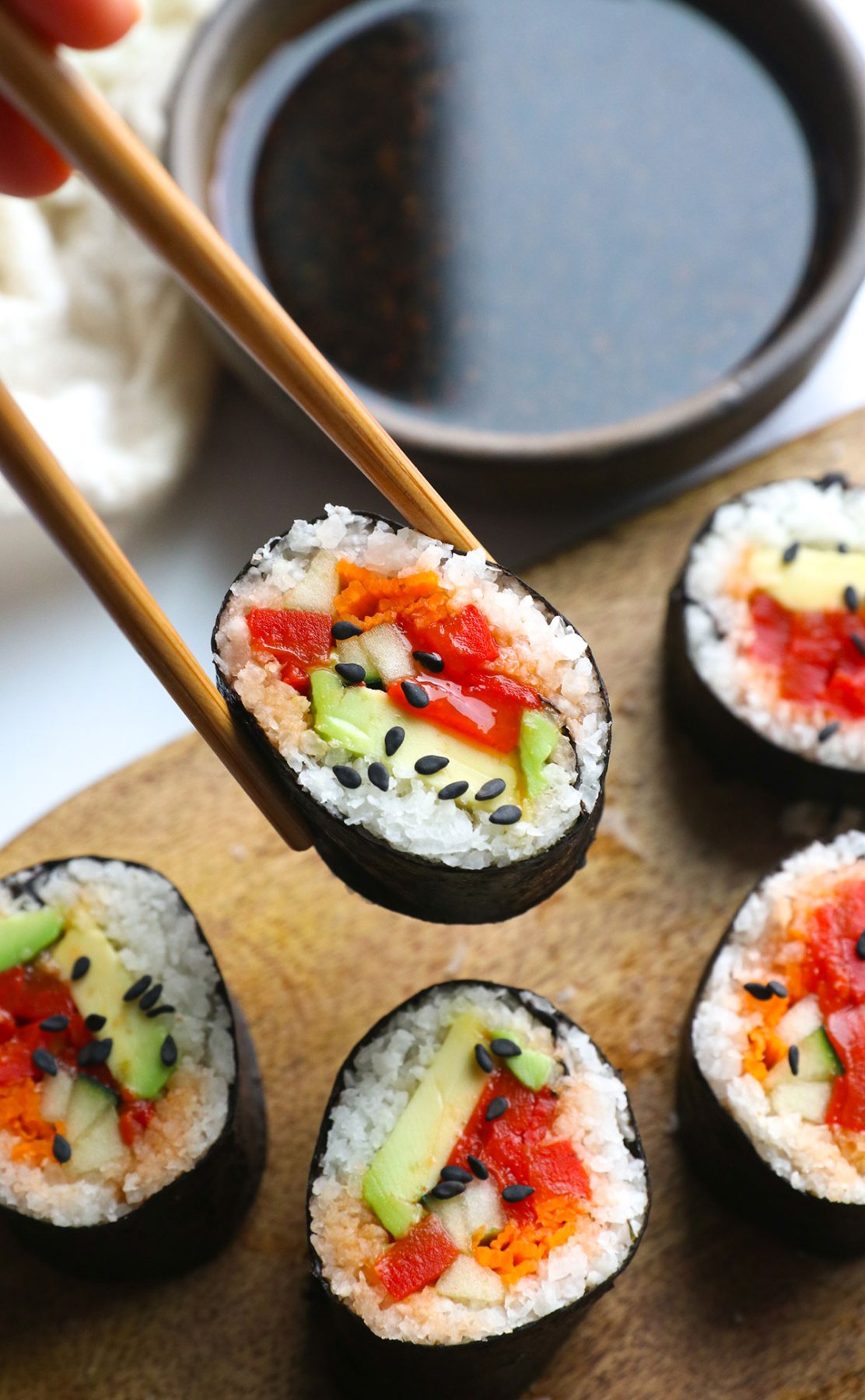
Vegetable Sushi Ingredients
- Nori Sheets. These seaweed wrappers are essential for rolling up sushi. If you’ve never used them before, you’ll notice that one side is shinier than the other. The glossy side should be on the outside of the roll, and the lines you see will help you make even slices when cutting the rolls later.
- Roasted Red Peppers. For vegetarian sushi, roasted red peppers have a similar texture to raw fish. You can buy them jarred for convenience, then toss them in sriracha sauce for a quick “spicy tuna” substitute.
- Jicama. This is my favorite rice alternative for making sushi because, unlike cauliflower rice, jicama doesn’t need to be cooked to become soft and tender. Peel and process it in a food processor, and it becomes rice-like a lot faster than cooking sushi rice. With that being said, you can use regular sushi rice if you prefer.
- Veggies. Avocado adds creaminess to your sushi rolls, while carrot and cucumber add crunch. Thinly slice these for the best bite. (I like to use a julienne peeler for the carrots, so they don’t get too thick.) Customize these rolls with any other veggies you love.
- Tamari and Ginger. These two work together to make an easy dipping sauce for your sushi. Tamari is often gluten-free (though check the label to be sure) for those who need an alternative to regular soy sauce.

How to Make Vegetarian Sushi
Step 1:
Start by preparing the rice. If you’re preparing classic sushi rice, follow the directions on the package. Rinse the short-grain rice in a fine mesh strainer until it runs clear, then transfer to a small saucepan and cover 1 cup of rinsed rice with 1.5 cups of fresh water.
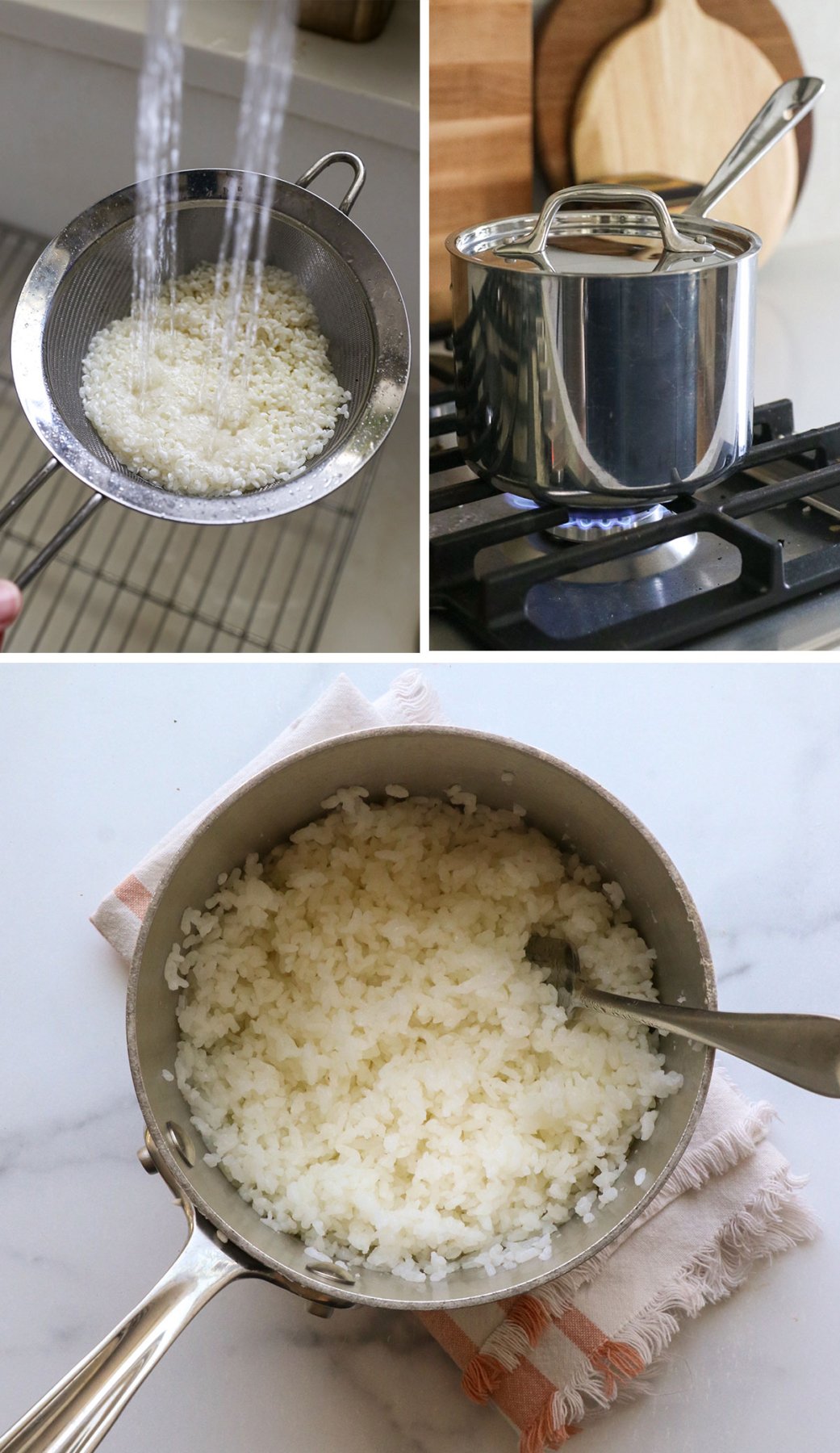
Bring the liquid to a boil, then cover with a lid and lower the heat to simmer for 20 minutes. When the timer goes off, remove the pan from the heat but keep it covered for 10 more minutes.
This will prevent the rice from burning or sticking to the pot. Season the rice with two tablespoons of rice vinegar and set it aside to cool.
Jicama Rice Alternative (My Favorite Shortcut!)
Alternatively, you can prepare jicama rice for this sushi. It’s faster because no cooking is required. Start by peeling the jicama, then cut it into small chunks.
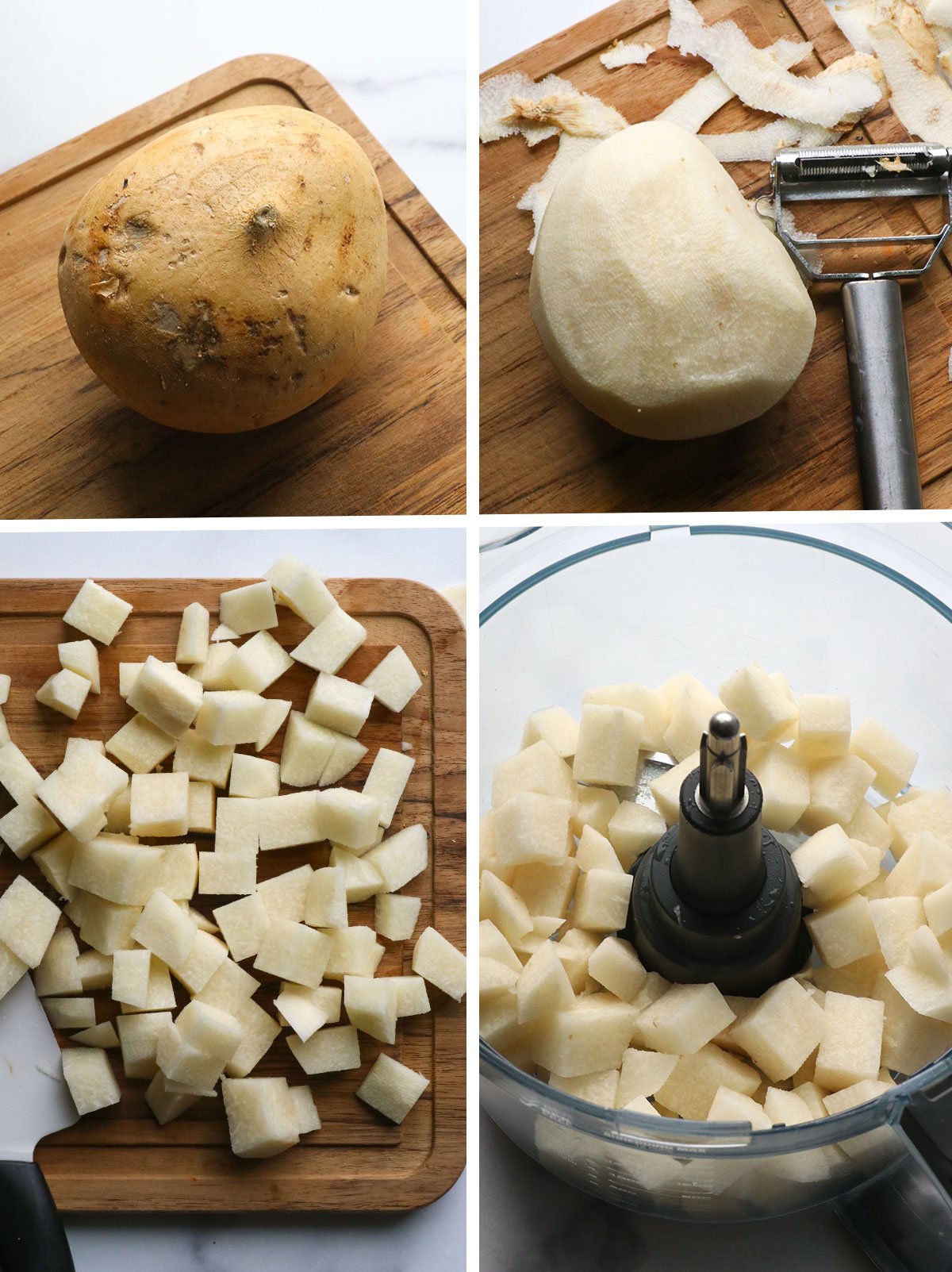
Add the chunks to a food processor fitted with an S-blade. Secure the lid and pulse several times until the jicama has a rice-like texture.
Transfer the grain-free rice to a thin dish towel, then squeeze out the excess moisture over the sink. The rice is ready to use immediately.
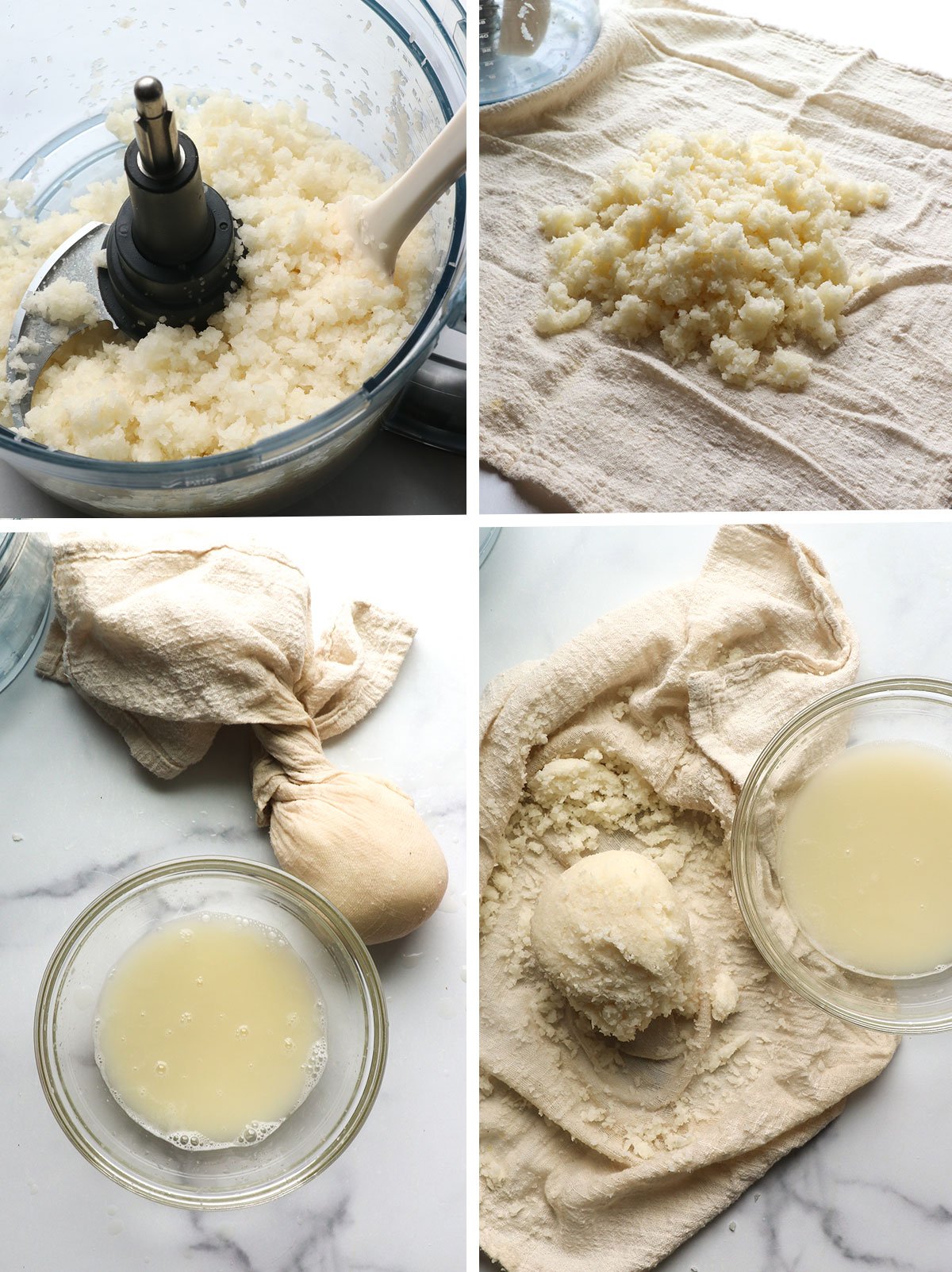
Step 2:
Next, prepare the sushi vegetables. Use a sharp knife to slice the cucumber, avocado, roasted red pepper, and carrots into thin strips. (A julienne or veggie peeler will give you the thinnest results for a carrot.)
Place the roasted red bell pepper slices in a bowl and drizzle with sriracha (about a tablespoon). Stir well so they are evenly coated. This will be your “spicy tuna” substitute in the veggie sushi.
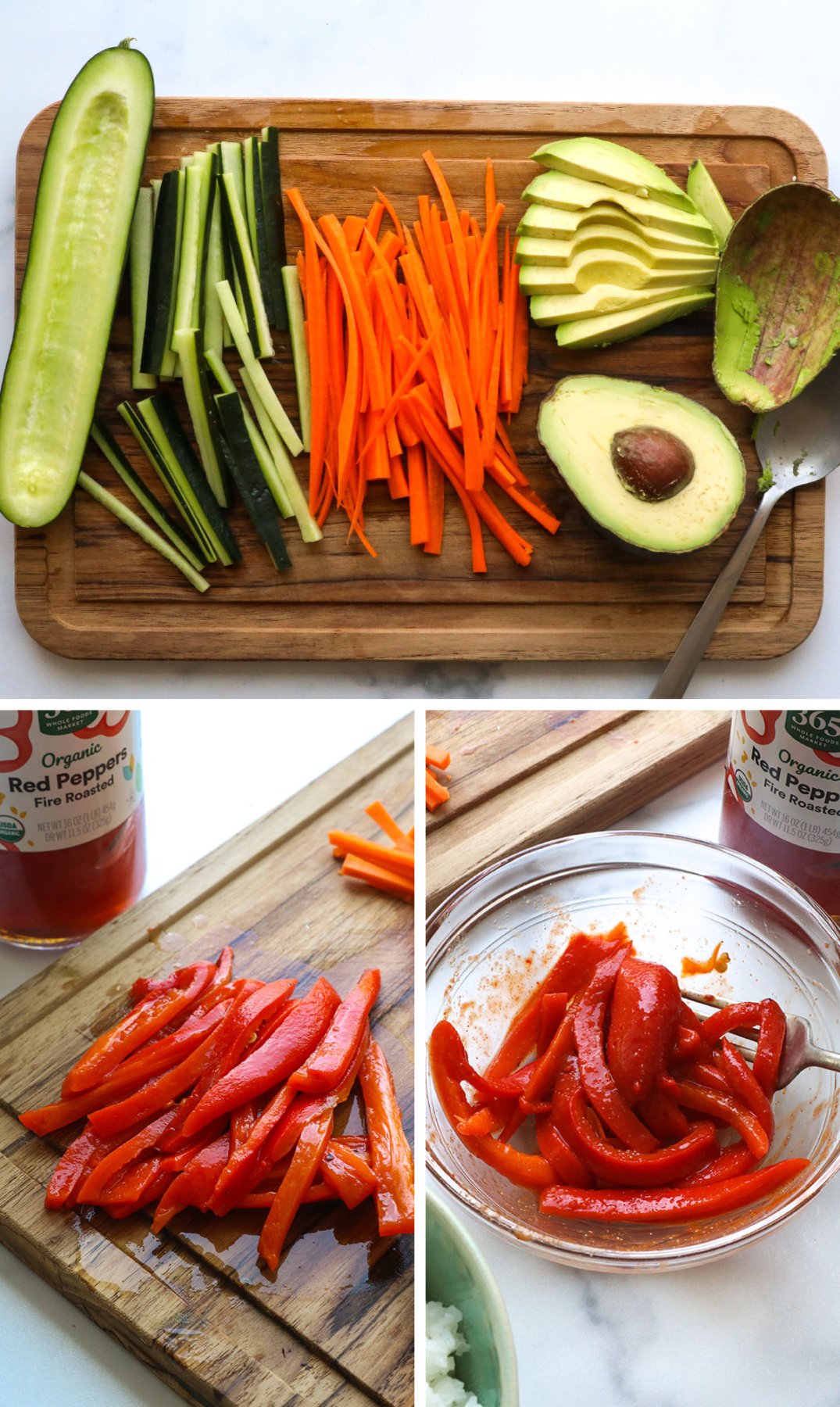
Step 3:
Place a sheet of nori on a bamboo sushi mat to prepare a vegetable sushi roll. The lines in the nori should line up with the string lines in your sushi mat. (The lines should look vertical to you.)
Fill the lower 2/3 of the nori with a flat layer of rice. Then top that with slices of avocado, plenty of spicy red bell pepper slices, cucumber, and carrot. See the photo examples in this post for guidance on amounts and placement.
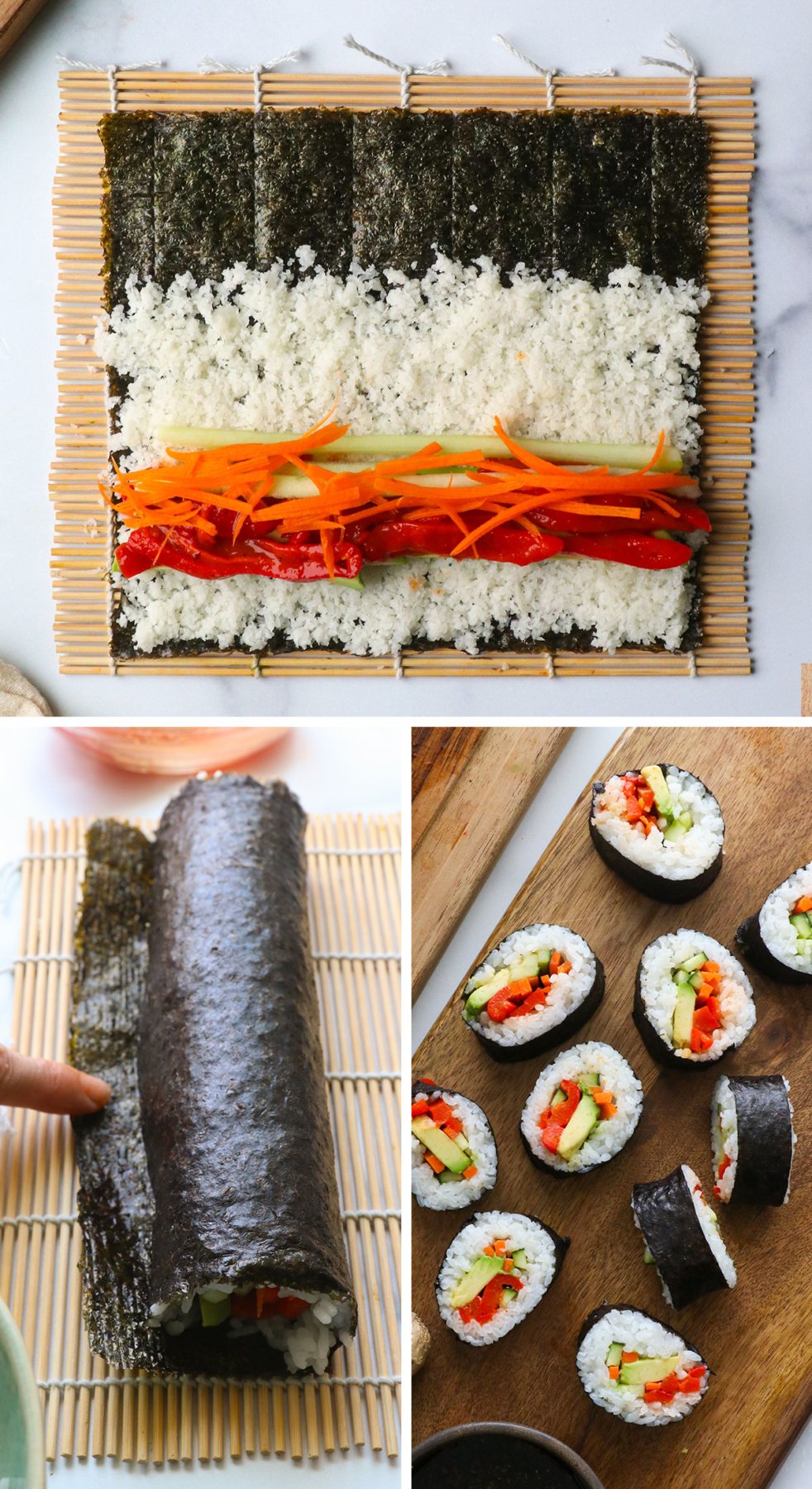
How to Roll Sushi
To roll the sushi, start at the bottom of the bamboo mat and roll upward, keeping the sushi as tightly wrapped as possible. When you reach the top of the sushi, dip your fingers in a bowl of water and wet the last inch of sushi paper. This will act as the “glue” to help close the roll.
When the sushi roll is closed, transfer it to a cutting board. Use a sharp knife to slice the roll into approximately 1-inch pieces. If your knife isn’t sharp enough, it will not cut the rolls cleanly.
It’s essential to have a very sharp knife in this case.
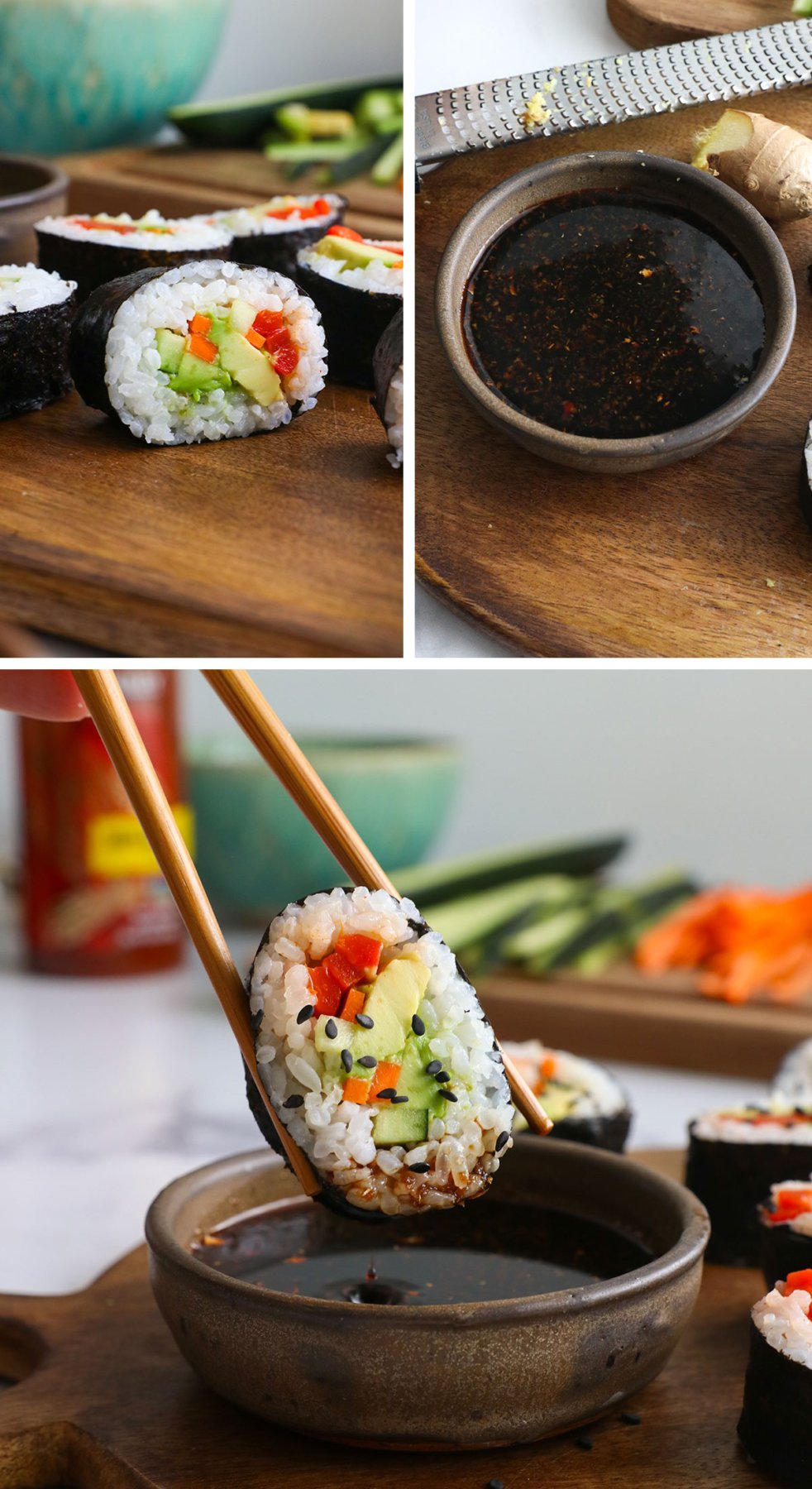
How to Serve Veggie Sushi
Sprinkle sesame seeds on top of your sushi, if you like, and serve with wasabi, pickled ginger, or your favorite dipping sauce. My favorite dip is simply a small bowl of tamari with freshly grated ginger added.
Repeat creating sushi rolls as needed. I usually make one or two full rolls per person, depending on what else you plan to serve, such as a green salad with carrot ginger dressing.
Want to skip the rolling process?
Make vegan sushi bowls instead, topped with creamy sriracha sauce.
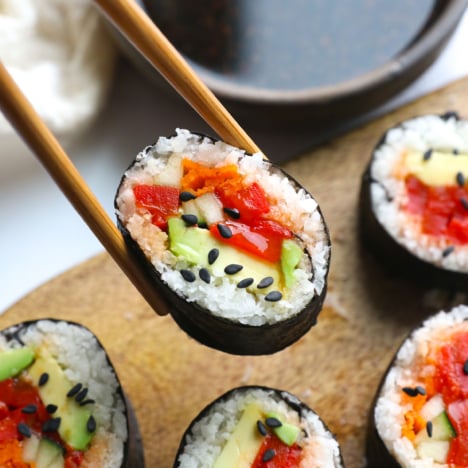
Ingredients
Vegan Sushi
- 1 medium jicama (or 1 cup sushi rice)
- 2 to 3 roasted red peppers , thinly sliced
- 1 tablespoon sriracha
- ½ avocado , sliced
- 1 carrot , thinly sliced (optional)
- ½ cucumber , thinly sliced
- 2 to 3 nori sheets
Dipping Sauce
- 2 tablespoons tamari (gluten-free soy sauce)
- ½-inch fresh ginger , minced
Instructions
- To prepare the no-cook rice, peel the jicama and cut it into chunks. Transfer those to the bowl of a food processor. Secure the lid, and pulse briefly until the jicama has a rice-like texture.
- Transfer the riced jicama to a thin dish towel, then squeeze as much excess moisture as possible from the veggie rice. (You can collect the juice in a bowl or drain it over the sink.) Once the excess moisture has been removed, the rice is ready to use without cooking. Note: If you prefer to use sushi rice, cook it according to the directions on the package.
- To create a spicy "tuna" replacement, place the sliced roasted red peppers in a small bowl. Add the sriracha and stir well, then set this aside.
- Place a sheet of nori on your bamboo rolling mat. The lines in the nori should look vertical to you (and usually they will be parallel to the strings in your bamboo mat). Fill the lower 2/3 of the nori with a flat layer of rice.
- Add a horizontal, single layer of avocado on top of the rice. (If you're new to sushi rolling, see the photos for reference!) Then add a layer of spicy roasted red peppers, and a few thin pieces of carrot and cucumber. I prefer having more avocado and red pepper in the rolls than other veggies, but you can customize this to your preferences.
- The last step is rolling them up. Starting at the bottom of the roll, use your bamboo mat to roll the bottom over the veggies, tucking them in tightly as you roll up the nori. You may not need the mat anymore once you get the roll moving. Roll the nori almost all the way, leaving about an inch of nori at the top. Get your fingers wet and add some water to that final section. This will help seal the roll as you finish rolling it up. Use water again, if needed, to seal the roll fully.
- Transfer the roll to a cutting board and use a very sharp knife to slice the roll into pieces. You will get 6 to 8 pieces per sushi roll. Repeat the process with your remaining nori sheets and sliced veggies. Serve these rolls right away with a dipping sauce of tamari mixed with freshly minced ginger. They taste irresistible this way! Leftover sushi rolls can be stored in an airtight container in the fridge for up to 4 days.
Notes
Nutrition
More Recipes to Try
If you try this veggie sushi recipe, please leave a comment and star rating below to let me know how you like it.


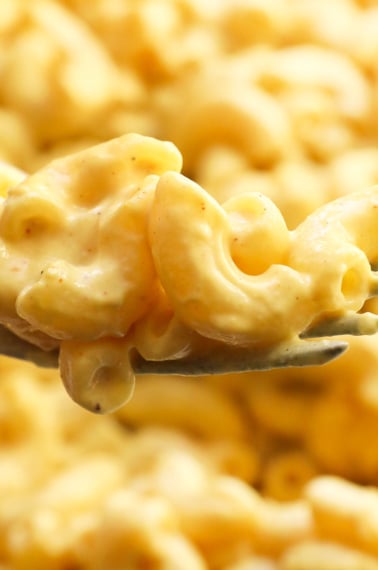
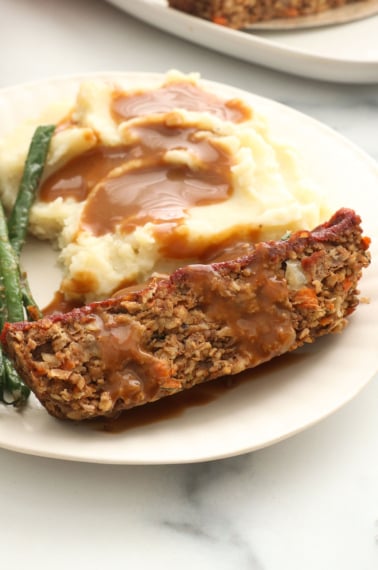

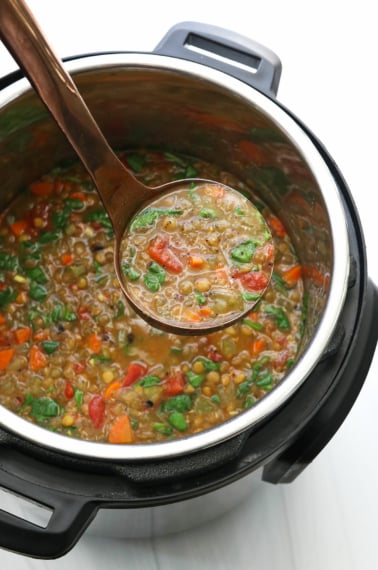






This is genius! I haven’t tried it yet, but I will this summer. I am trying to eat low carb, and rice is a huge no. I use cauliflower rice, but it isn’t really similar to me. I bet jicama works great. I’ll come back when I try it to let you know.